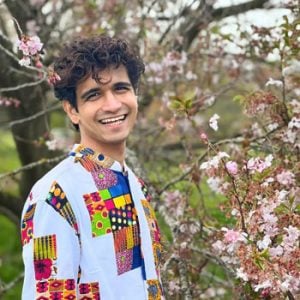Dear One Future Community,
When I was asked to curate this newsletter, almost a year ago, I agreed readily. An outline was prepared, drafts were shared, and an eventual essay on “mapping accountability” materialised over the last few months. The approach was fairly cut-and-dry: begin with an explanation of how maps are everywhere, move on to show how they’ve been used over the years, and then go on to show how activists can take advantage of them today. Ever since I read ilesha’s heartwarming January letter, however, I realised that a more clinical approach towards turning to maps as sites of justice needed to be accompanied by a politics of care.
I turned, then, to the two maps that had become ubiquitous over the last four months of the genocide in Gaza. The first, a political map of the region that showcased increasing Israeli occupation of land over the last few decades (in complete violation of international law). The second, a project compiling queer narratives called Queering The Map that is being used to highlight the lived experiences of queer Gazans to counter efforts to pinkwash the war. Both maps, in their own way, turned the very logics of cartography on their head to make powerful political statements that could resonate across the world.

Historically, after all, mapping has been a tool for those in power to mark and expand their dominance. Initially used by early seafarers to cross uncharted waters, maps were later used by colonisers to plunder the wealth of communities across the world. Putting something – or someplace – on the map, then, meant staking your claim to it. As a result, maps have been sites of dramatic political confrontation: a small error in representing what regions are within your control on a map has been seen as seditious or anti-national.
Recent scholarship, most notably JB Harley’s Deconstructing the Map, has pushed the boundaries of what maps can represent and led to the creation of a field now commonly referred to as “critical cartography.” Maps are being seen not just as repositories of empirical information but sites of complex negotiations of power. If earlier used to assert dominance over others, maps are now becoming tools by marginalised communities to invert conventional power dynamics. Mapping and other forms of data visualisation have become integral to finding new ways of ensuring accountability and building community.
The Gaza maps are a case in point. The first inverts the logic of staking claim to a territory as being a mark of dominance. Increasing occupation of Palestinian lands, then, is not a cause for celebration for Israel but rather a visual demonstration of injustice that becomes a rallying cry for global solidarity around the Palestinian cause. The second rejects the empirical claims made by maps, refusing to let maps merely be static displays of facts and brings in lived experiences. These experiences are created by, sustained by, and shared by queer communities as objects of care – stories that bypass the convoluted debates around authenticity and evidence in journalistic reportage on Gaza.
These maps are not very difficult to create. Inspired by a counter-mapping project that documented how the New York City Police Department disproportionately surveilled black and Muslim communities, I began using open source Geographical Imaging Systems (GIS) software like QGIS to create my own maps. The first project I worked on analysed the ways in which the New York City subway was inaccessible to those who were not native English speakers, and how the excessive reliance on text could make navigating the city a nightmare for the least privileged – including, but not limited to, recent migrants to the United States.
Pink List India, a project I co-founded in 2019, today uses Mapbox (a community mapping software) to track every single statement on LGBTQ+ issued by every single Member of Parliament on an interactive map. This allows you to simply type in your address and find a report card on LGBTQ+ rights for your elected representative. At a time when there is unprecedented surveillance against citizens, Pink List is a site of counter-surveillance that turns the gaze onto our politicians to ensure that they are held accountable for their stance on equal rights.
At a time when physical organising and activism seems too difficult or even pointless, I hope that maps can become a vital source of sharing knowledge and building networks of care. If you, or your communities, are interested in the ways in which maps can effectively strengthen your own advocacy – please feel free to reach out for a conversation.
With warmth,
Anish
